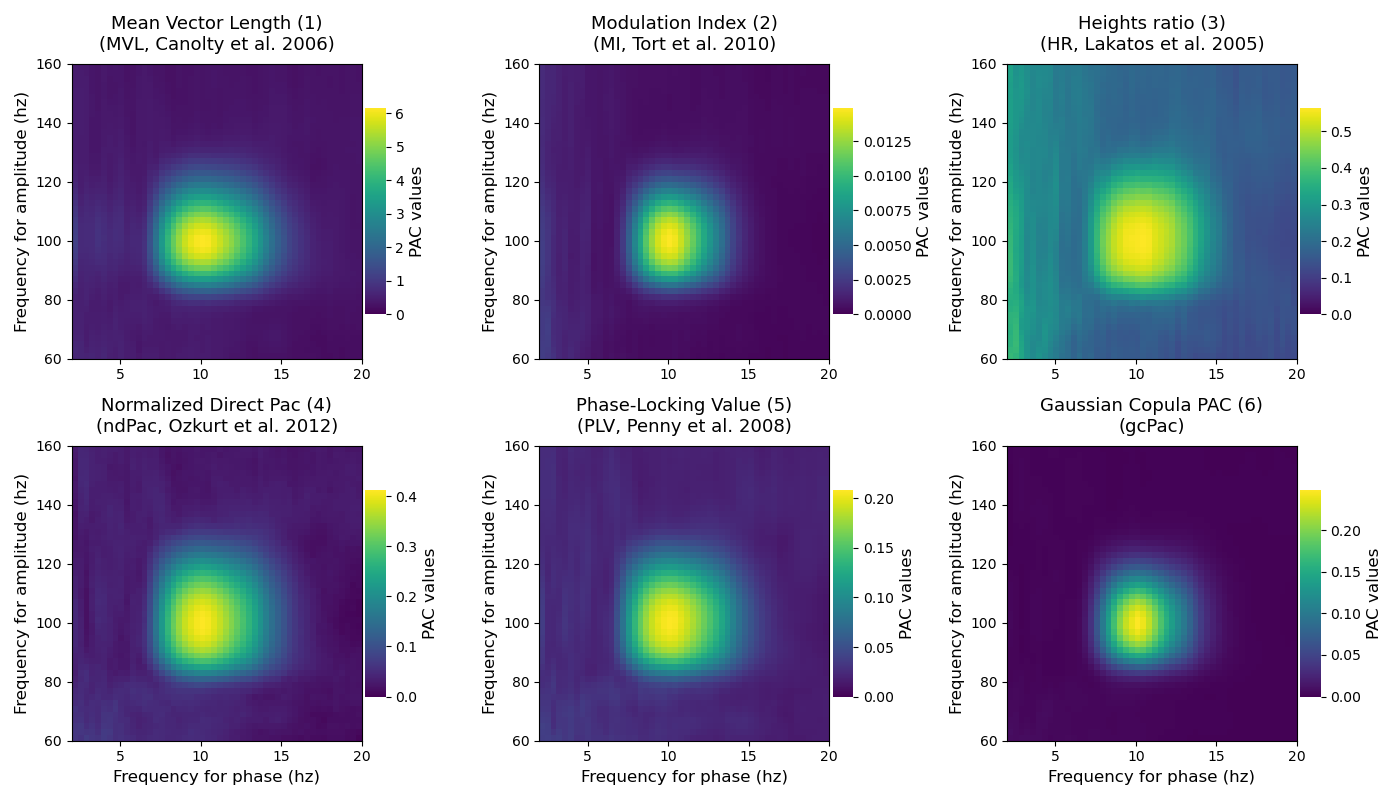Note
Click here to download the full example code
Comparison of the implemented PAC methods¶
This script offers a comparison between all of the implemented PAC methods, in particular the methods that are computed across times-points.
from tensorpac import Pac
from tensorpac.signals import pac_signals_wavelet
import matplotlib.pyplot as plt
Simulate artificial coupling¶
first, we generate several trials that contains a coupling between a 10hz phase and a 100hz amplitude. By default, the returned dataset is organized as (n_epochs, n_times) where n_times is the number of time points and n_epochs is the number of trials
f_pha = 10 # frequency phase for the coupling
f_amp = 100 # frequency amplitude for the coupling
n_epochs = 20 # number of trials
n_times = 4000 # number of time points
sf = 512. # sampling frequency
data, time = pac_signals_wavelet(sf=sf, f_pha=f_pha, f_amp=f_amp, noise=.8,
n_epochs=n_epochs, n_times=n_times)
Extract phases and amplitudes¶
Since we’re going to compute PAC using several methods, we’re first going to extract all of the phases and amplitudes only once
# define a pac object and extract high-resolution phases and amplitudes using
# Morlet's wavelets
p = Pac(f_pha='hres', f_amp='hres', dcomplex='wavelet')
# etract all of the phases and amplitudes
phases = p.filter(sf, data, ftype='phase', n_jobs=1)
amplitudes = p.filter(sf, data, ftype='amplitude', n_jobs=1)
Compute, plot and compare PAC¶
Once all of the phases and amplitudes extracted we can compute PAC by ietrating over the implemented methods.
plt.figure(figsize=(14, 8))
for i, k in enumerate([1, 2, 3, 4, 5, 6]):
# switch method of PAC
p.idpac = (k, 0, 0)
# compute only the pac without filtering
xpac = p.fit(phases, amplitudes)
# plot
plt.subplot(2, 3, k)
title = p.method.replace(' (', f' ({k})\n(')
p.comodulogram(xpac.mean(-1), title=title, cmap='viridis')
if k <= 3:
plt.xlabel('')
plt.tight_layout()
plt.show()

Total running time of the script: ( 0 minutes 18.072 seconds)
